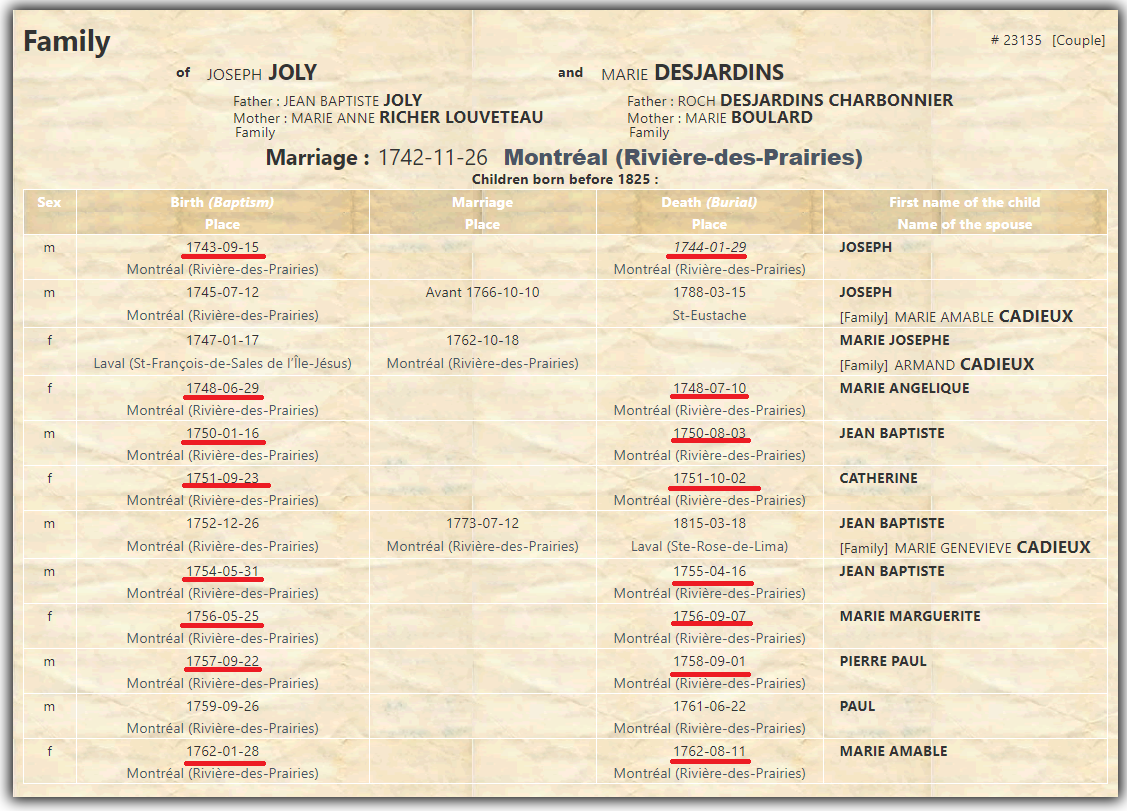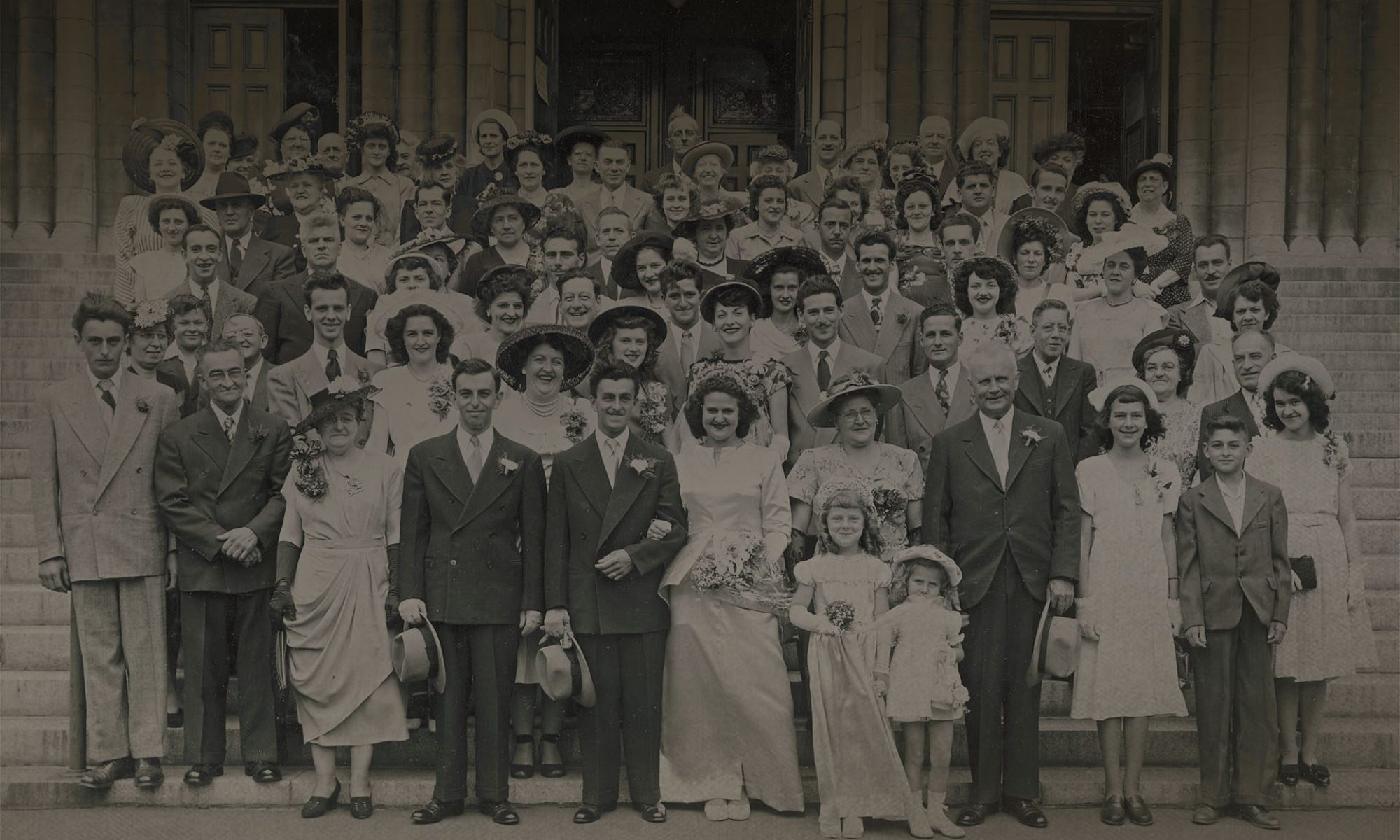This post is also available in: Français

In a previous article, we have shown using the family of Joseph Landry dit Penot and Marie Josèphe Coron dite Dauphinais how the PRDH family reconstructions, the centralization of all the vital events pertaining to a family, allow us to bring light to the living conditions of our ancestors. This exceptional couple, married in 1778, gave birth to an incredible 25 children, a great example of the natural fertility that prevailed in the absence of contraception and other social limitations.
Such a fertility rate would have been unsustainable due to the population increase resulting of so many births, had it not been for the mortality rate that was associated with the population of the time. Elevated mortality under the Old Regime made death an omnipresent part of our ancestors’ lives: it could happen at any age, contrarily to today, where it is mostly associated with old age. The infant mortality rate (death before the age of 1) was extremely high, and the children who did live past the age of 1 were still prone to sickness and accidents. Individuals reaching the age of 50 would be considered elderly. Men and women would die of malnutrition, work accidents, lack of proper hygiene as well as sickness, including smallpox epidemics that ravaged the population.
The information colligated by the PRDH allows us to put actual figures on these conditions. At the forefront is infant mortality rate. Between a quarter and a third of children born under the French Regime died before the age of 1, with a gradual increase over time, particularly in cities. Infant mortality rate is indeed directly linked to hygienic conditions and thus to the detrimental effects of overcrowding in cities. For example, 50% of children born in Montreal within the last few decades of the French Regime died before reaching their first birthday. Overall, less than half of the population would reach the average age of marriage, which was 20 years old for women, and 25 years old for men.

Marrying at the age of 25, an average man would go on living 39 more years, to the age of 64. An average woman, marrying at 20, would also go on living 39 more years, to the age of 59. Why such a disparity? Because 1.5% of childbirths would result in the death of the mother, which meant that on average over the course of her life, a woman had a 12% chance of dying while giving birth. This had a direct impact on the average length of marriages at the time: barely half of the married couples would reach their silver wedding anniversary. This also explains the frequency of remarriages, as the presence of two parents was necessary to raise a large family.
You are now acquainted with the average living conditions and mortality rates in Quebec during the XVII and XVIII centuries. How do these rates compare to those among your ancestors? Careful! You may notice that your ancestors fared better than what is being described in this article, which is entirely logical. If you are here today to research and explore your ancestors’ history, it is through an unbroken lineage going back to them. A lineage that is a testimony to their children’s survival, as well as their own…
Bertrand and François Desjardins
November 2017


